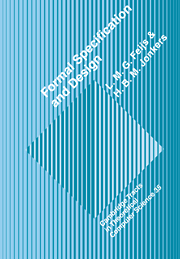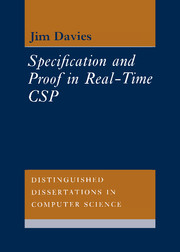Formal Specification and Design
Formal specification is a method for precisely modelling computer-based systems that combines concepts from software engineering and mathematical logic. In this book the authors describe algebraic and state-based specification techniques from the unified view of the Common Object-oriented Language for Design, COLD, a wide-spectrum language in the tradition of VDM and Z. The kernel language is explained in detail, with many examples, including: set representation, a display device, an INGRES-like database system, and a line editor. Fundamental techniques such as initial algebra semantics, loose semantics, partial functions, hiding, sharing, predicate and dynamic logic, abstraction functions, representation of invariants and black-box correctness are also presented. More advanced ideas, for example Horn logic, and large systems are given in the final part. Appendices contain full details of the language's syntax and a specification library. Techniques for software development and design are emphasised throughout, so the book will be an excellent choice for courses in these areas.
- Suitable for industry as well as academia - both authors work for Philips
Product details
November 2005Paperback
9780521435925
352 pages
245 × 170 × 18 mm
0.558kg
Available
Table of Contents
- Part I. Algebraic Specification:
- 1. Introducing the basic concepts
- 2. Setting up algebraic specifications
- 3. Structuring algebraic specifications
- 4. Implementing algebraic specifications
- Part II. State-Based Specification:
- 5. From algebras to states
- 6. Setting up state-based specification
- 7. Structuring state-based specification
- 8. Implementing state-based specification
- Part III. Advanced Techniques:
- 9. Theoretical topics
- 10. Additional language constructs
- 11. Towards large systems
- Bibliography
- Appendices
- Index.




